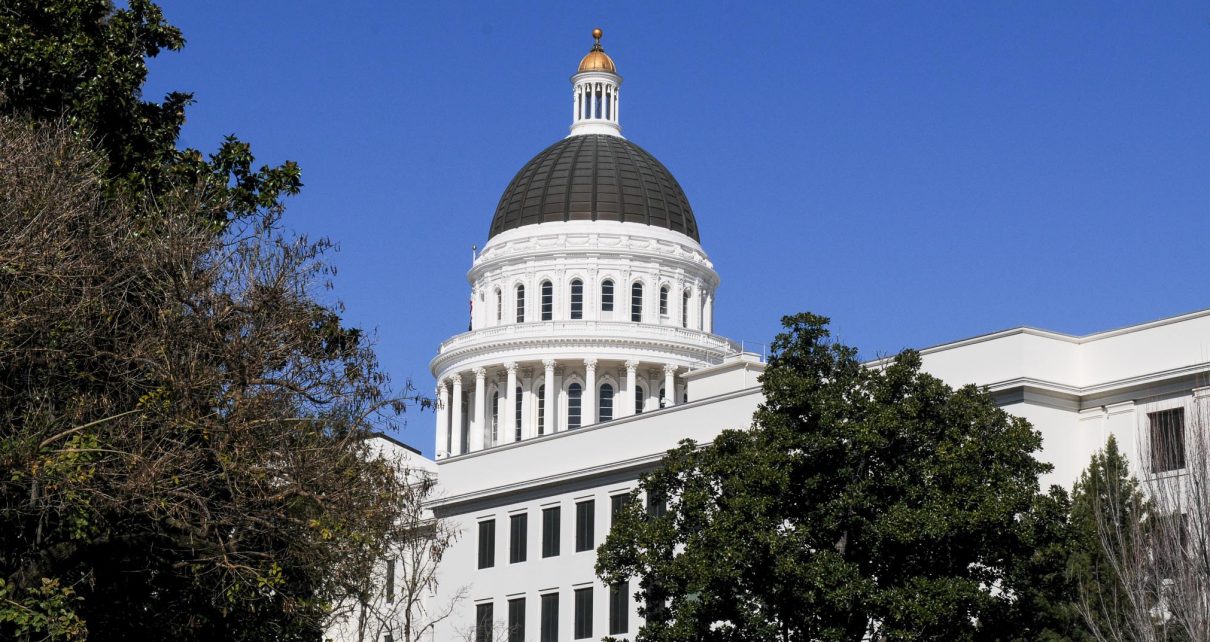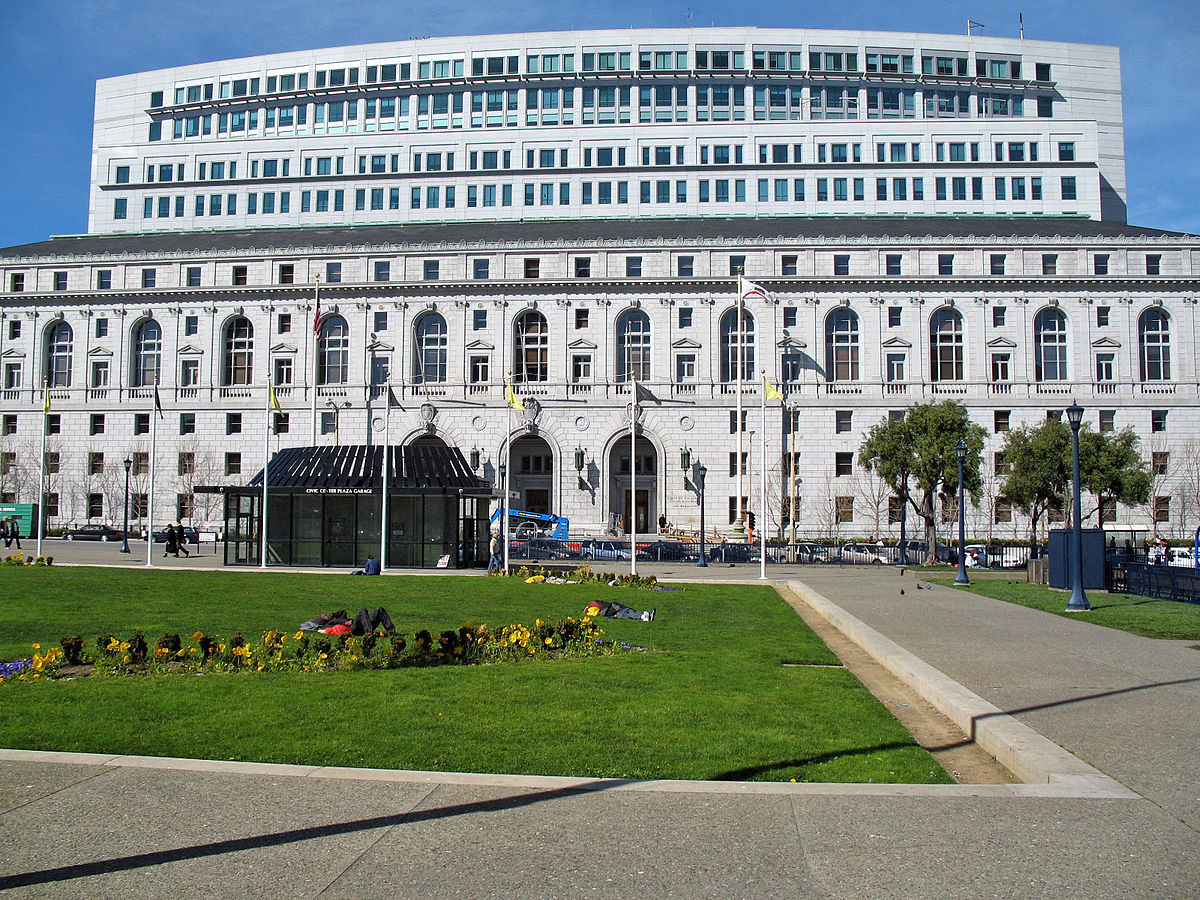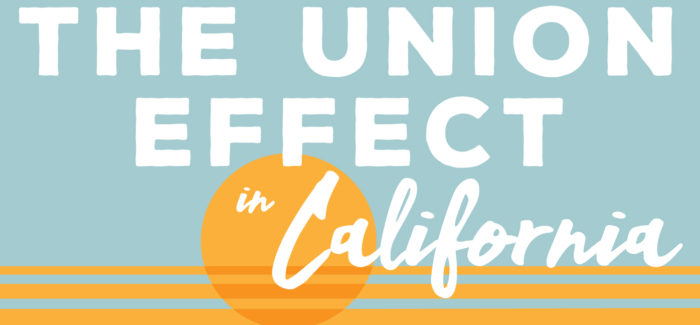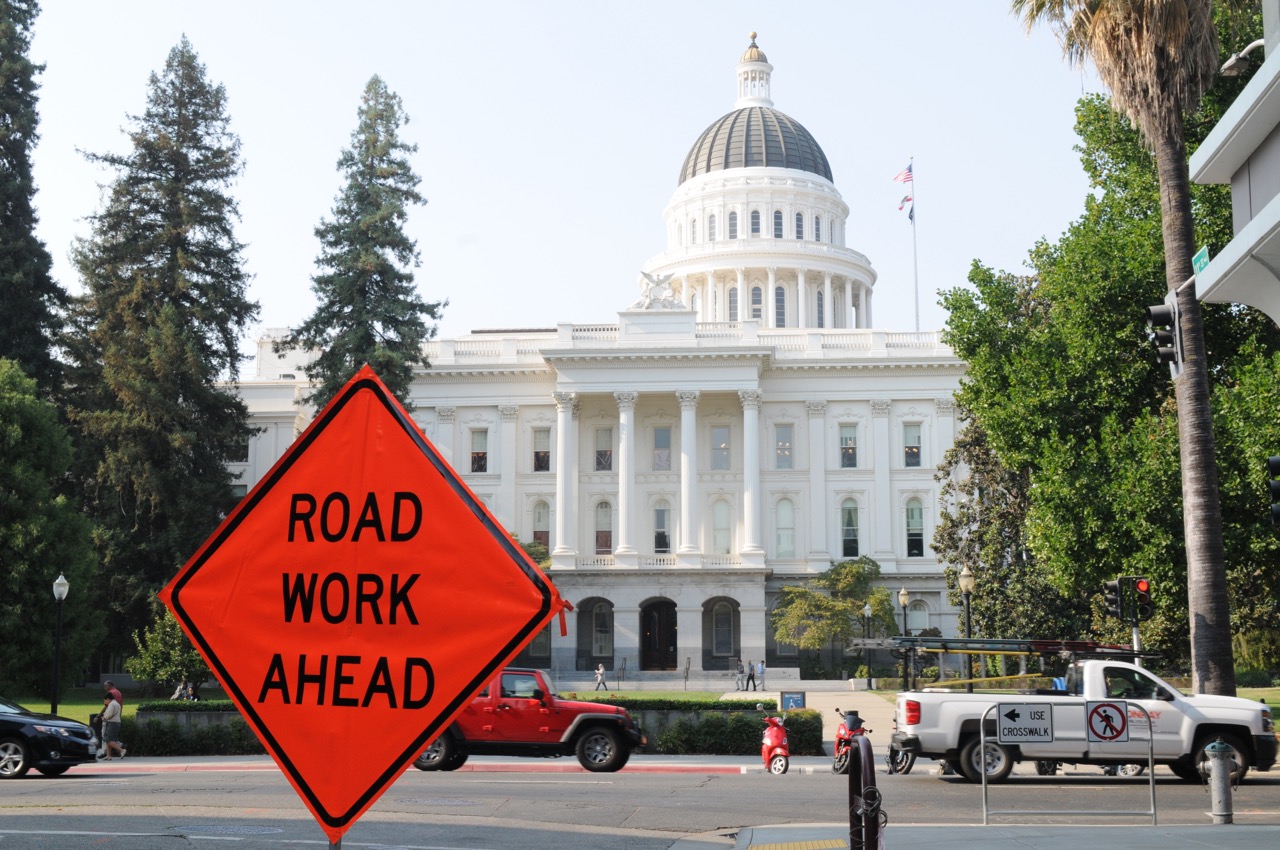
California State Capitol. (Photo: Kevin Sanders for California Globe)
Time for California’s Unions to Get Serious About Pension Reform
The idea that CalPERS and other pension funds were ever helping California’s economy is a blatant falsehood
By Edward Ring, March 23, 2020 4:05 pm
An independent contractor in California has 12.4 percent withheld by the Social Security Trust Fund, and for that, they may expect a maximum of $45,480 if they retire at age 70, after nearly 50 years of work.
There was a time, long ago, when California’s pension systems were responsibly managed. They made conservative investments, they paid modest but fair benefits to retirees, and they didn’t place an unreasonable financial burden on taxpayers. But a series of decisions and circumstances over the past thirty years put these pension systems on a collision course with financial disaster. And like hybrid war, or creeping fascism, or a progressive, initially asymptomatic disease, it is impossible to say exactly when these pension systems crossed the line from health to sickness.
An excellent history of how California’s public employee pension systems moved inexorably towards the predicament they’re now in can be found in a City Journal article entitled “The Pension Fund That Ate California.” Written in 2013, when California’s pension systems were still coping with the impact of the Great Recession, author Steven Malanga identifies key milestones: The power of public sector unions that began to make itself felt starting in the late 1960s. The pension benefit enhancements that began in the 1970s. The growing power of the union representatives on the pension fund boards. Prop. 21, passed in 1984, which allowed the pension systems to invest in riskier asset classes.
The biggest milestone on the road to sickness, however, began in 1999, as Malanga writes, “when union-backed Gray Davis became governor and union-backed Phil Angelides became state treasurer, and the CalPERS board was wearing a union label.” The state legislation that followed, mimicked by local measures across California, dramatically increased pension benefit formulas. Not only were benefits increased, but they were increased retroactively, meaning that even state and local employees nearing retirement would receive the increased pension as if these higher benefit formulas had been in effect for their entire career. And as the internet bubble blew deliriously bigger, the experts said the cost for all these enhancements would be negligible.
In the aftermath of the internet bubble’s inevitable pop in 2000, pension systems engaged in accounting gimmicks and deceptive proposals to assist the unions to roll out these benefit increases to nearly every city and county in California.
This would be an early example of how government unions and financial special interests saw an alignment of their political agendas, but it wouldn’t be the last. As payments to the pension plans inexorably increased, year after year, unions found common cause with the financial sector to market tax increases and bond measures. Every election, in lockstep, they would fight to convince the taxpayer to pay more and borrow more – and it was always for the children, for the elderly, but in reality, it was usually for the pensions.
The Burden of Public Sector Pensions on California’s Taxpayers
The complexity of pension finance makes it relatively easy to obfuscate the problem with creative accounting and emotional arguments. But certain facts can help to put the issue in perspective. Before the current financial crisis began, California’s state and local public sector pensions were estimated to rise from approximately $30 billion per year to $60 billion per year by 2025. Currently, California’s total state and local government general revenues are around $500 billion per year, meaning that pension payments are already set to consume over 10 percent of ALL state and local government revenue.
This ten percent doesn’t include the cost of retirement health insurance benefits, nor the cost for Social Security which many of California’s public employees also enjoy. It also doesn’t include the tens of billions spent every year by taxpayers to pay overtime, based on the fact that paying overtime is actually less expensive than paying for another government employee who will require another pension benefit package.
The pension burden, however, is about to get much bigger.
With most pension reform stopped in its tracks by relentless litigation, perhaps the only way pensions would ever be reformed would be through economic necessity. If so, now would be a good time. A perfect storm has struck. Here are highlights:
1 – The stock market has crashed. Interest rates are at zero, meaning it is unlikely investments in bonds will see continued appreciation. Real estate may also be at a peak, and in any case, real estate investment appreciation cannot make up for losses in stocks and bonds.
2 – Government revenues are going down for various reasons. California’s state government relies heavily on receipts from high income individuals, and those individuals rely on stock appreciation. These revenues always fall in a downturn, and this effect will ripple into every California city and county. Also, sales tax revenues, which local governments rely on, will dramatically fall over the coming few months.
3 – Californians for the first time in several election cycles have rejected local measures to fund taxes and bonds. Normally, at least two out of three new local tax or bond are measures are approved by California voters. This time, in March 2020, those proportions were surprisingly reversed, with about two out of three failing to get voter approval. This means new revenues these localities were counting on will not materialize.
A closer look at CalPERS will reveal just how dramatic the problem has finally become:
In their 6/30/2019 financial statements, CalPERS, the largest pension system in the U.S., reported themselves to be only 70.2 percent funded. To cope, the system was requiring its participating agencies to nearly double their annual payments by 2025. Needless to say, these increases were going to create havoc on civic budgets that already can barely afford to pay for their pensions.
That was then.
As of March 20th, the market value of all investments managed by CalPERS had fallen to $333.8 billion, after topping a record $400 billion just one month earlier. The most recent officially reported estimate of the total liability carried by the CalPERS system is $505 billion as of 6/30/208 (ref. most recent CalPERS CAFR, page 122). If you review the trends over the past decade, this figure has never gone down. This means, best case, as of today, CalPERS is 66.9 percent funded. The real number is almost certainly lower.
As of March 20, for example, the Dow Jones Index closed at 19,161. At close on 3/23, the Dow is down to 18,591, down another 3.1 percent. At this time, there is no end in sight.
In 2015, the average pension for a California public employee after 30 years of work (60 percent as long working) was $68,673, not including any benefits. It is surely higher now.
Pension Solvency Will Require Union Cooperation
If there’s one thing that history has shown, it’s that nothing gets done in California without the blessing of the public sector unions. One may argue on principle that unionized government is an abomination, having little or nothing in common with private sector unions which – properly regulated – have a vital role to play in American life.
But so what? California’s state and local governments have been taken over by these unions, who operate as senior partners to leftist billionaires, trial lawyers, race-baiting rent seekers, and environmentalist fanatics. For the most part, financial and corporate special interests are complete sell-outs to these all powerful unions, or survive via precarious detente.
Fixing pensions in California, with union cooperation, would be relatively easy. With union cooperation, politicians would have a chance to enact reforms that would not get mired in endless litigation. With union cooperation, government workers – and the public – would be able to learn about the extent of the problem instead of getting dosed with emotional propaganda. Possible solutions could be far reaching and inspiring. Here are some ideas:
1 – Reduce all pension benefit accruals to pre-1999 levels for all future work. Leave intact benefits earned to-date.
2 – Lower the long-term rate of return projection for pension assets to 6 percent.
3 – Lower the inflation stop-loss for retirees from the current 70-80 percent to 50-60 percent – provide for COLA reductions if economy encounters deflation.
4 – Raise the age of eligibility to 62 for all employees, with full benefits only available to miscellaneous employees at age 67 (same as Social Security).
5 – Implement additional “triggers” that take effect if funding falls below 80 percent, including suspension of COLA, prospective further lowering of the annual multiplier for active workers, retroactive lowering of the annual multiplier for active workers, reduction of the retiree pension payment, increase the required payment to the pension plan by active workers via withholding.
The pension systems themselves could assist this process greatly if they simply provided analysis of what measures 1 and 2 would accomplish. Lowering the rate of pension benefit accruals for future work will permit lowering the long term rate of return projection without increasing the total liability. If the pension system analysts could provide a table expressing that curve, it would greatly assist policymakers and reformers, including the union leadership.
Unfortunately, pension actuaries and fund managers do not have an illustrious track record in these exercises, so, again, it would be useful if the union leadership itself would insist on a quick turnaround and an honest, depoliticized assessment.
And what if, from now on, public employees earned lower pension benefits? First of all, it would take an awful lot before those benefits descended to the level of what the rest of California’s workforce can expect from Social Security.
An independent contractor in California has 12.4 percent withheld by the Social Security Trust Fund, and for that, they may expect a maximum of $45,480 if they retire at age 70, after nearly 50 years of work. In 2015, the average pension for a California public employee after 30 years of work (60 percent as long working) was $68,673, not including any benefits. It is surely higher now.
What public sector union leadership might contemplate is how can the prospects for all workers in California improve. Now, with the economy grinding nearly to a halt, it is an especially good time for this sort of contemplation. Why not require CalPERS to invest 50 percent of their assets in “California based companies and projects” instead of the current 9.1 percent (ref. CalPERS CAFR, intro page 4)?
The idea that CalPERS and other pension funds were ever helping California’s economy is a blatant falsehood. The numbers are irrefutable. In 2018 CalPERS collected $28.7 billion, but only paid out 26.9 billion (CalPERS CAFR, pages 42 and 43). Since $3.5 billion of those payments were made to retirees living out of state, only $23.4 billion stayed in California. This means that Californians gave CalPERS $5.3 billion more than retirees living in California received in pension benefits. Meanwhile, over 90 percent of CalPERS investments are made outside of California.
What if public sector union leadership decided to fight for all California workers, by supporting reform of the California Environmental Quality Act, which would permit cities and suburbs to expand their borders onto open land again, greatly lowering housing costs?
What if these unions supported pension fund investments in revenue bonds and equity positions to build new freeways, water storage projects, and cheap energy infrastructure?
Imagine how much could be built if literally hundreds of billions of pension fund assets were invested right here in California!
There is a new consensus that could form in California, excluding the libertarian fanatics who think the only criteria for a pension fund investment is the return, even if it requires investing in Chinese slave shops. This new consensus could also exclude the identity-politics demagogues whose only criteria for a proper investment is the “diversity” of the workforce, the directorships, and the communities affected.
Who knows, maybe a new consensus could even knock the environmentalist fanatics – along with their trial lawyer and crony “capitalist” allies – down to size, allowing “green” investment criteria to resume its appropriate place within a kaleidoscope of worthy considerations.
If all these things were done, California’s cost-of-living would go down, meaning public sector retirees could enjoy the same standard of living as before, even if they retired with somewhat lower pensions. Moreover, the economy would be sizzling again, pouring record tax revenues into a solvent public sector.
The win-win envisioned here is no more preposterous than the notion of 7.25 percent pension fund returns for the next thirty years, and far more beneficial for everyone living in California instead of just beneficial for public servants.
This could be a time for a consensus that wipes away extremes, which might make CalPERS and the other pension systems a benefit to California’s economy instead of a terrifying drain. Public sector unions; the ball is in your court.
- Ringside: Will the Delta Pumps Operate at Capacity this Winter? - December 18, 2025
- Ringside: Will Advocates for More Water Supply Projects Find Unity? - December 11, 2025
- Ringside: EVs and California’s Future Demand for Electricity - December 4, 2025





Hahahahahaha
the bad psychology of union members means they will never do anything for the greater good.
unions are all narcissistic group think people. they have to be stopped. if not, they will take everything they possibly can.
unions are totally corrupt. openthebooks.com
Ed,
The Public Sector Unions will NEVER willingly go along with any material reductions …… only VERY financially tiny tinkering around the edges to make it LOOK LIKE they are cooperating.
The ONLY way to achieve MATERIAL reductions in generosity (and hence cost) is having it FORCED upon on them, and that will take a radical change in the UNION-owned Legislature, and in States like CA, a Constitutional amendment allowing such reductions (and even THEN, only for FUTURE service accruals).
“1 – Reduce all pension benefit accruals to pre-1999 levels for all future work. Leave intact benefits earned to-date.”
For new employees, accruals already are lower than pre 1999 levels.
“In the CalPERS policymaker report, the example is a worker with a starting salary of $46,000 who retires after 20 years at age 62. The pension for the pre-reform or “classic” worker is $2,140 a month, compared to $1,705 for the new hire — $435 less.”
Classic employees (pre-2013 hires) will probably never reduce accruals unless current wages are increased to compensate. It is a pragmatic problem… “to attract and retain” qualified workers.
(CalPERS report: pay hike to offset pension cuts?, calpensions 5 May, 2014)
“2 – Lower the long-term rate of return projection for pension assets to 6 percent.”
Should have been done about 20 years ago, if not more.
“Pew said the eight systems provide a road map to sustainable pension funding that pays 100 percent of actuarial recommended contributions, has policies to manage risks and costs, and automatically reduces benefits or increases contributions during downturns.
The average contribution in 2017 of the eight states (Idaho, Nebraska, New York, North Carolina, South Dakota, Tennessee, Utah, and Wisconsin) was less than a quarter of the contributions paid by the three worst-funded states (Illinois, Kentucky, and New Jersey).”
(Calpensions wrap-up: A look back at the ‘crisis’, January 8, 2020)
Contributions less than a quarter.
Quoting …………
““In the CalPERS policymaker report, the example is a worker with a starting salary of $46,000 who retires after 20 years at age 62. The pension for the pre-reform or “classic” worker is $2,140 a month, compared to $1,705 for the new hire — $435 less.””
I don’t know if your old & new formulas are correct, but your $ pension amounts are ridiculous because it assumes that the workers will be earning the SAME dollar amount in 20 years as they did when hired. Doing this makes it look like their pension are peanuts. They’re no, they’re VERY VERY rich. $2,140.40/mo=$25,680/yr, and $25,680/$46,000 =56%
There is not a snowball’s chance in hell that a Private Sector worker could retire after working only 20 years with anywhere near 56% of his/her final salary.
The really important point…………….. the $ amount that Taxpayers CONTRIBUTE towards PUBLIC Sector pensions AND Retiree healthcare benefits should be NO GREATER than what PRIVATE Sector workers typically get in retirement security benefits from their employers……….. unless demonstrably shown that they earn less in “wages” for the same hours/wk, and then ONLY greater in taxpayer subsidy sufficient to erase that wage shortfall.
Right now, for the vast majority of Public Sector workers, any wage shortfall is WAY more than offset by the HUGE Public Sector Pension & Benefit ADVANTAGE. THAT is what needs to END …. and for the future service of all CURRENT (not just new) workers.
TL–“Not a snowball’s chance in hell…..” that’s just it! My spouse was in the private sector for 52 years and the illegals came along in 1986and forced the union out. My spouse has a private-sector pension (it was frozen in place in 1986 without one penny of interest–he gets $723/mo, and no COLAS–iit is used only to pay the medical insurance premium which is only a PPO supplement to Medicare. I would not wish a predicament like this on any other private-sector worker. I give “thanks” every day for my public-sector defined-benefit pension–we are not rich but we are sustainable.–until we won’t be with this pandemic.
“I give “thanks” every day for my public-sector defined-benefit pension–we are not rich but we are sustainable”
SeeSaw, you should thank US, the taxpayers, for your gov workfare job and public union fraud.
This is why we can’t have nice things.
Internet math
Terminology
Assumptions
Etc., etc., etc.
pre-1999, formula was 2%@60
post 1999, increased to 2%@55
post 2013, reduced to 2%@62
The formulas are here
https://www.calpers.ca.gov/docs/forms-publications/local-misc-benefits.pdf
For “starting salary of $46,000”, instead use “FAS of $46,000”, and at age 62,you get a pension of…
2%@60…$1,741/mo.
2%@55…$1,814/mo.
2%@62…$1,533/mo.
In other words, the accrual levels were not reduced to pre-199 levels, they were reduced to –below– pre-1999 levels.
TL…
“Right now, for the vast majority of Public Sector workers, any wage shortfall is WAY more than offset by the HUGE Public Sector Pension & Benefit ADVANTAGE. THAT is what needs to END …. and for the future service of all CURRENT (not just new) workers.”
In spite of all the superlatives and ALL CAPS, that is simply not true. Some state workers earn more than equivalent private workers, as they do in every state and most other countries. Some earn much less. Which leaves many in the middle who are roughly equal. It has been this way for decades, and all the rants in the world will not change it. Nor should they.
Stephen,
NOBODY in the Private Sector get a 2% COLA-INCREASED (which ALONE increases it’s “value” by 25% to 30% over an otherwise identical Plan w/o COLA) pension. And Private Sector DB pensions (in the few that still exist in an unfrozen status) VERY VERY rarely include annual COLA increases.
There is ZERO justification to grant Public Sector workers that or ANY more costly retirement Plan than what Private Sector Taxpayers typically get from their employers ……… rarely more than 4% to 5% into a 401K Plan and NOTHING towards employer-sponsored retiree healthcare.
It WAY past time to end this Public Sector DB pension/benefit financial rip-off of Private Sector Taxpayers.
My “2% COLA” is going to be 1.81% this year–whoop-de-do!
That’s 1.8% HIGHER than what the lucky few in the Private Sector with DB pension get in COLA increases …. with is almost always NOTHING.
Yes–that is why I am not cheering to bring the public sector down even with the private sector–it should be the other way around.
Why is that SeeSaw ?
Can’t accept EQUAL ?
Think you (Pubic Sector workers) deserve more ? Why is that ?
Yes–that is why I am not cheering to bring the public sector down even with the private sector–it should be the other way around.
HAHAHAHA… yeah if we had the private sector gifting out $100K+ pensions at age 50 for GED jobs they would be BANKRUPT within 24 hours you Cantankerous Cold-Hearted Chump SeeSaw!
Any COLA for you SeeSaw is from your Gov workfare job, all based on fraudulent actions of CalTURDS.
Tell it to the judge. Hell, tell it to Edward Ring:
“Impose a ceiling on pension benefits to retirees, based on the principle that pensions are supposed to ensure retirement security, not lavish affluence. Similarly, establish a floor for pension benefits to retirees, based on the principle that employees at the low end of the pay scale are nonetheless entitled to retire with an income sufficient to live with dignity.”
I don’t thing Ed has done the math, but that “floor” is what’s costing most of the money, and, like I said, it’s a policy decision… redistribution of income. I don’t think you will find the public sentiment to change it.
Stephen,
You raised this SAME point on another Blog, and my response to you there has not changed……
————————————————————–
To make the point a bit more focused……………
Maybe, if the justifiable TOTAL COMPENSATION (wages PLUS all pensions and benefits) for a specific job is only $50,000 (the SAME is would be paid in the Private Sector) …….. your NOT going to be able to grant the Public Sector worker a pension & benefits worth $30,000, and them complain that they can’t live on the balance of $20,000 in wages.
Suppose we gave that worker an extra say $25K in “wages” so he/she can better pay his/her daily bills. If doing the identical job as his/her Private Sector counterpart, he/she is totally compensated at $75K vs $50K for his/her Private Sector counterpart.
Is the Public Sector worker not OVER-COMPENSATED ?.
But what I described is exactly what you feel that we should do.
I disagree. Sorry Stephen, but Public Sector workers are NOT “special” and deserving of a better deal ………. on the Taxpayers’ Dime.
——————————————-
I usually agree with Ed Ring, but here I disagree ……… not that they should be able to retire with dignity, but that Taxpayers should NOT fund a larger share of Public Sector worker retirement needs than what they (Private Sector Taxpayers) typically get in retirement security from their employers.